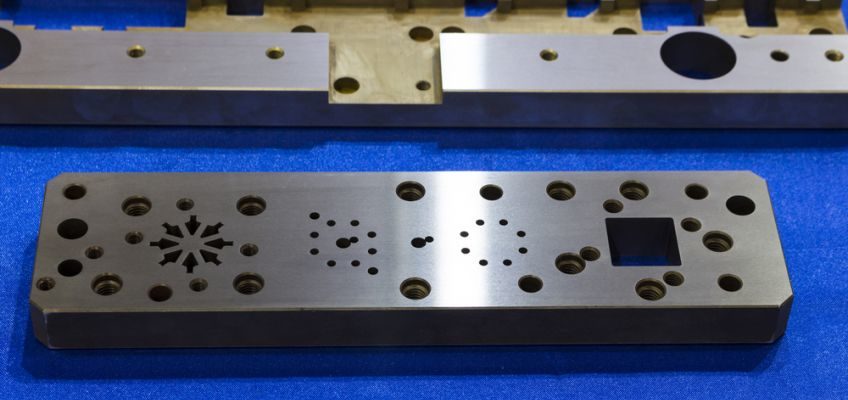Electrical discharge machining, or EDM, is a method primarily used for machining hard metals, especially those that are difficult to machine using other techniques. This is a method of machining that only works on materials that can conduct electricity. In wire EDM, the tool for cutting is the electrical discharge from a wire.
The material of the wire can erode, leading it to break, and hence in wire EDM, the wire is wound around spools that spin to constantly expose different parts of the wire being active in the desired machining.
How Wire EDM Finishing is Different
EDM surface finishes are different from those produced by machining with carbide and other hardened tools. In those cases, every cutting process produces a finish which is influenced by the direction and movement of the cutting tool. Sliding friction is lower in the direction of the tool, than it is across. In EDM there is no direction per se. As a result, finishes with wire EDM can be mirror-like.
Wire EDM works by creating microscopic lightning bolts between the tool, the wire, and the metal piece being worked on. These arcs of electricity touch the workpiece and produce intense heat that vaporizes the material and removes it from the surface, resulting in a small pit. These pits may have the depth of microns, but every second, thousands of such pits are created. As a result, the workpiece is subjected to progressive erosion.
The material removed by this erosion is carried out by an insulating fluid, a flowing dielectric. Dielectrics are very poor conductors of electricity and no electricity flows through them. This flowing dielectric gets filtered out at a different point in the wire EDM machine.
When you increase power and frequency through the wire, it can result in more powerful arcs that are able to remove a greater quantity of material. This requires a higher flushing pressure to remove the material debris that was created, and this results in larger pits and rougher surfaces. So, it is possible to get a high-quality finish, or rougher finish, by controlling the power and frequency flowing through the wire.
The hardness of material is not a factor for its ability to be cut with wire EDM, and this allows wire EDM to be used for machining even the hardest and toughest of materials, as long as they are good conductors of electricity. Therefore, it’s possible to use wire EDM to cut tungsten carbide and tool steel.
Wire EDM Finishing Process
In the conventional cutting of metals, the surface roughness achieved is inversely proportional to the power and speed of the cutting. In other words, higher quality finishes are achieved by slower cutting. With wire EDM, subsequent passes tend to go faster than the ones that came before.
When you require high-quality cutting and finishing with wire EDM, it is a normal procedure to make the workpiece go through a rough cut and one or more skimming cuts. With each pass, less and less material is removed as it gets closer to the finished edge.
For example, if we take a .010” diameter wire, the first pass may remove 0.013” of material with the overburn. The next skim could remove 0.0015”. The next one takes 0.0004”, and finally 0.0001”. Clearly, more passes can result in very smooth surfaces, but there is also a link to the density of the material being cut. The denser the material, the smoother the finish can be with fewer passes.
With several passes through wire EDM, it is possible to completely avoid any secondary processes, like grinding, that many metal products need to be put through when cut by other means.
Because wire EDM allows such precision in cutting, along with no directionality of the cuts, wire EDM is a great choice when you need a high-quality surface finish.

